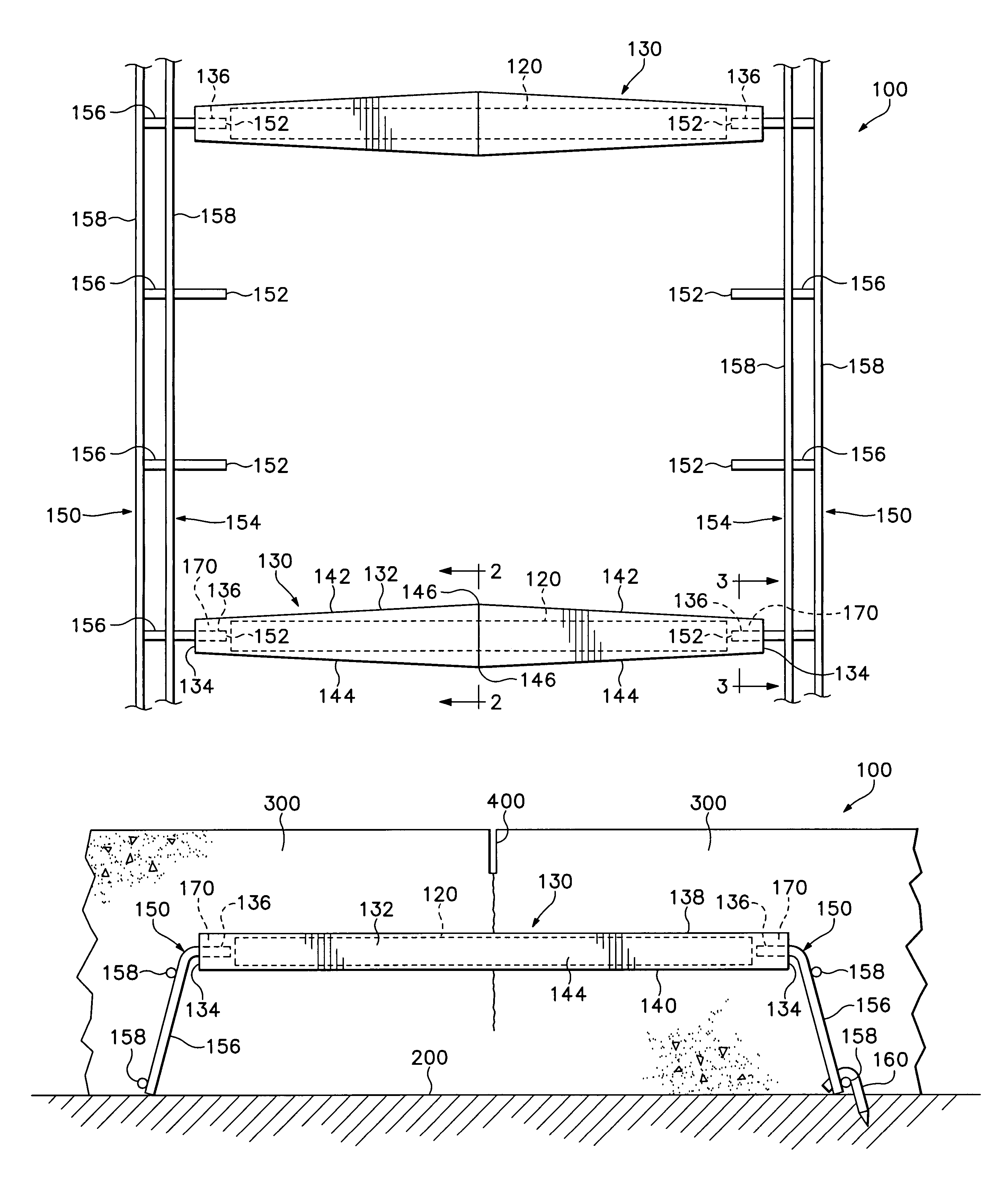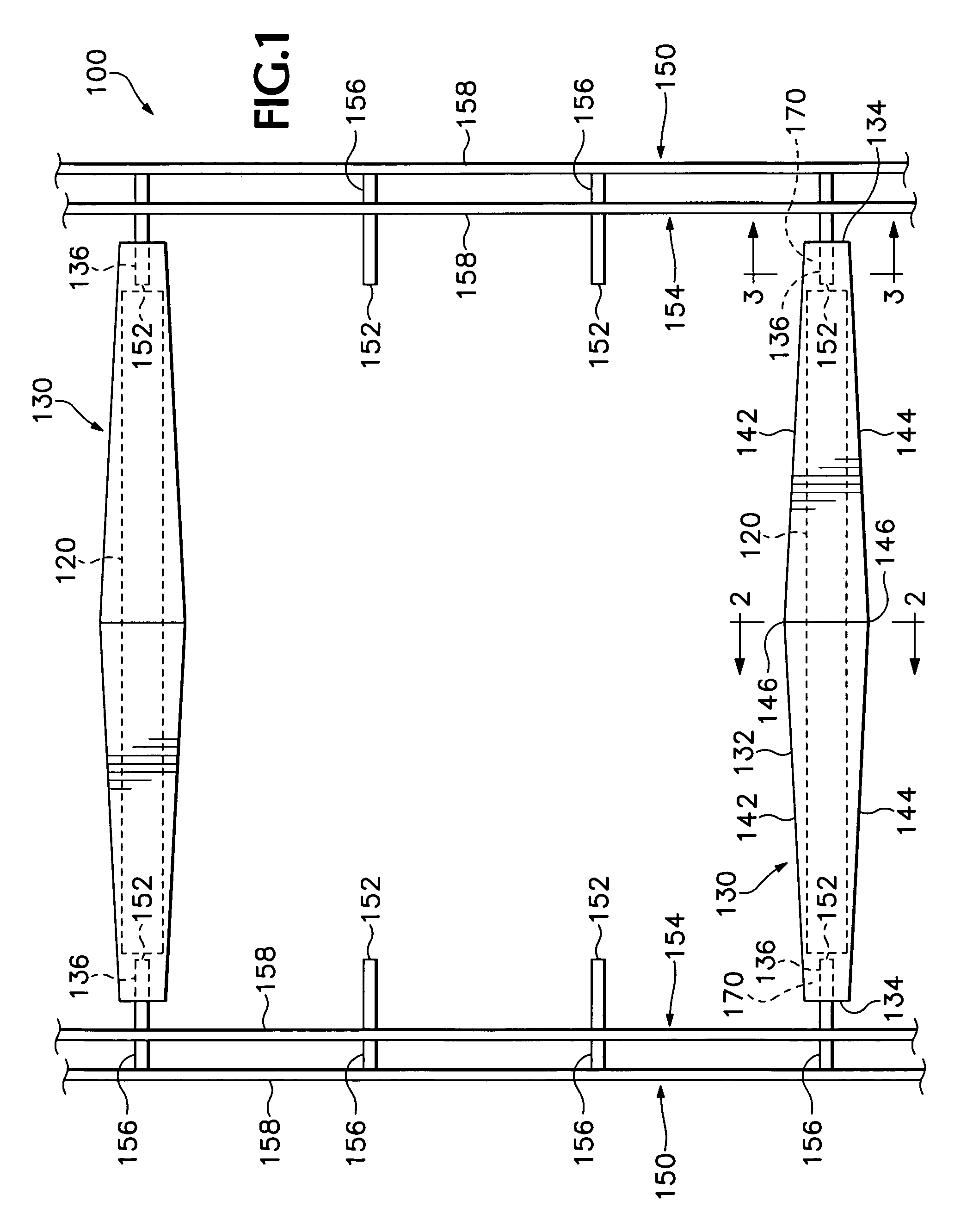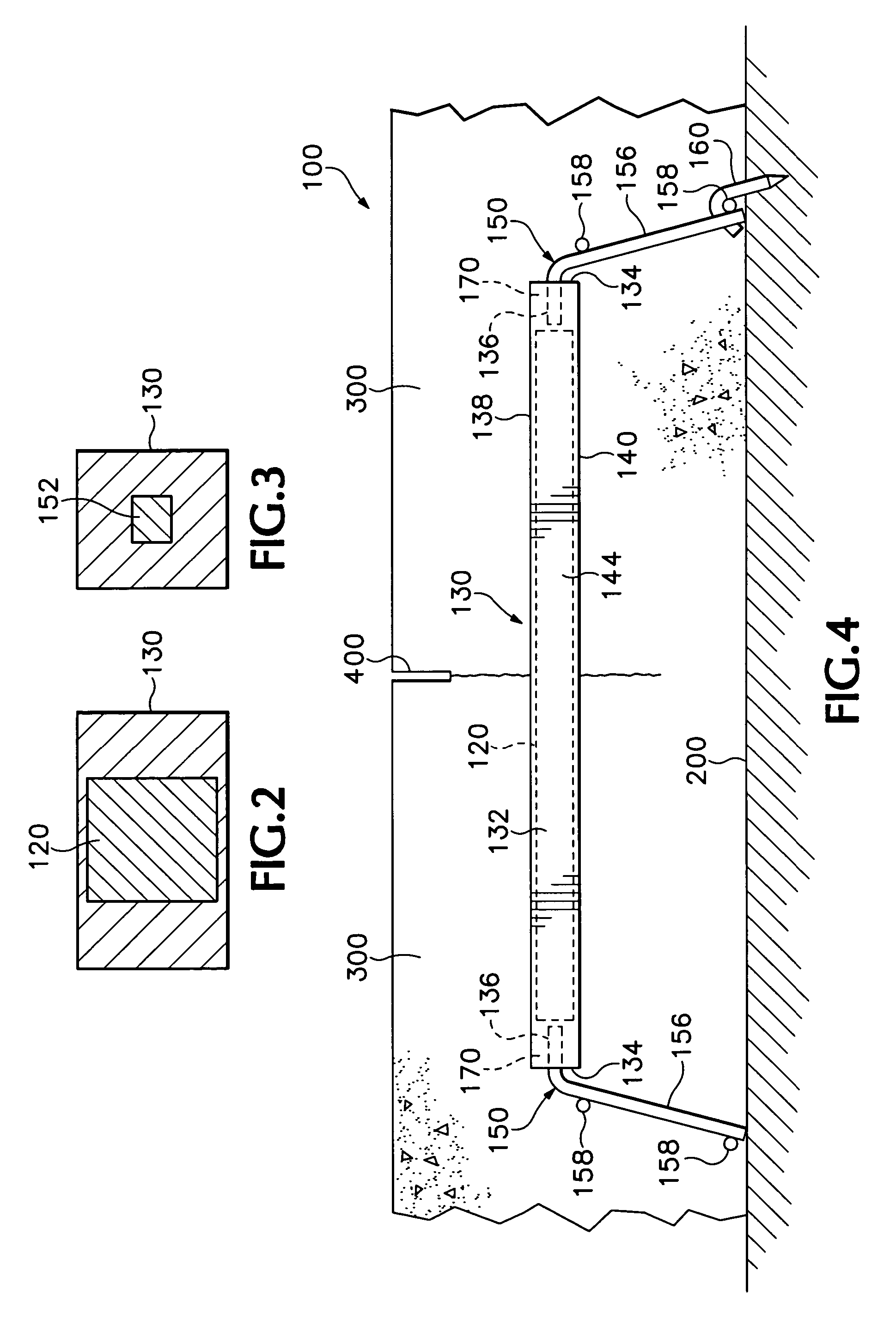Concrete slab dowel system and method for making and using same
a concrete slab and dowel technology, applied in the field of dowel systems, can solve the problems of destroying the mark, and reducing the service life of the pavemen
- Summary
- Abstract
- Description
- Claims
- Application Information
AI Technical Summary
Benefits of technology
Problems solved by technology
Method used
Image
Examples
Embodiment Construction
[0037]Conventional slab dowels are positioned within concrete sections. In a typical concrete formation sequence, the first concrete slabs and second concrete slabs are poured in sequence. Transverse joints are then saw cut or formed through methods well known in the prior art to reduce and / or relieve stresses in the concrete and prevent cracking. A longitudinal joint is formed between the two concrete strips comprising the first concrete slab and the second concrete slab.
[0038]Dowel bars are embedded in the concrete slabs for maintaining adjacent sections of concrete in alignment during contraction and expansion of the concrete, and for transferring shear stresses and bending moments across a joint formed between adjacent concrete slabs. The cross-sectional sizes and lengths of the dowel bars vary depending on the types of installation and the required forces to be counteracted. The dowel bars are placed and supported with respect to transverse joints and longitudinal joint.
[0039]A...
PUM
 Login to View More
Login to View More Abstract
Description
Claims
Application Information
 Login to View More
Login to View More - R&D
- Intellectual Property
- Life Sciences
- Materials
- Tech Scout
- Unparalleled Data Quality
- Higher Quality Content
- 60% Fewer Hallucinations
Browse by: Latest US Patents, China's latest patents, Technical Efficacy Thesaurus, Application Domain, Technology Topic, Popular Technical Reports.
© 2025 PatSnap. All rights reserved.Legal|Privacy policy|Modern Slavery Act Transparency Statement|Sitemap|About US| Contact US: help@patsnap.com



